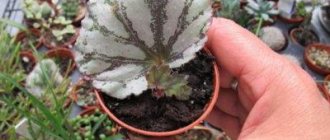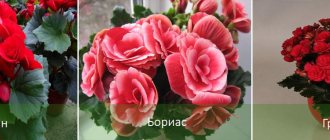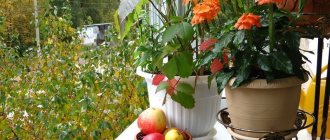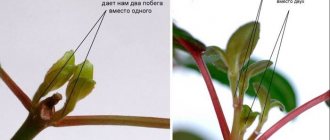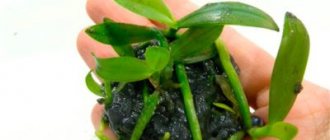- September 1, 2019
- Houseplants
- Efimova Anastasia
Begonia is one of the most beautiful and unpretentious indoor plants. It has enviable vitality and is very easy to propagate. In total, there are about 1000 different species of begonias - from three-meter giants to tiny ones that barely reach a height of 10 cm. Several popular species are grown everywhere in our country - graceful, sagging, royal, multi-flowered, elatior begonia. Propagation by leaf of any of them is not difficult. Although experienced gardeners claim that the method of propagating this magnificent flower should be chosen based on its characteristics - appearance, variety, characteristics of the leaves and root system.
Classification
Begonia is a tropical beauty native to Africa, Asia and South America. It got its name from the governor Fr. Haiti - M. Begona. All begonias are conventionally divided into two groups:
- Decorative blooming - with bright lush flowers and long flowering.
- Decorative-deciduous - with bright, attractive foliage and small, inconspicuous flowers.
Based on the type of root system, begonias are divided into tuberous, rhizomatous and plants with a superficial root system.
Among all the mentioned groups there are shrubs, subshrubs, creeping and erect herbaceous plants.
Dividing rhizomes and begonia bushes
Croton flower - propagation at home, what methods
Tuberous begonia is propagated by dividing its rhizome. For this work you need to equip yourself with a sharp knife. The bush should be removed from the pot, long stems, leaves and flower stalks should be trimmed. Subsequently, it is necessary to rinse the roots in water to clear them of excess soil. It is worth cutting the rhizome so that each part has at least one bud, and the cut edges should be sprinkled with charcoal to speed up their healing.
Rhizome of root begonia
To make rooting go faster and smoother, it is worth treating the roots with root or heteroauxin. Subsequently, it is worth planting parts of the rhizome in individual pots, half deepening them into a moist substrate. It is worth covering the container and not opening it until the first leaves appear. When the shoot reaches 7 cm, the tuber can be completely covered with substrate.
Note! Begonia can be bred in this way if the plant has reached 2-3 years of age, and its rhizome has at least two buds located at a great distance from each other. The plant can be propagated using this method in the spring, until shoots grow from the buds.
Popular types of indoor begonias
- A group of ever-blooming begonias. Shrubs are no taller than half a meter. The leaves are wide, smooth, and veined. The stems are dense and fleshy. The flowers are small, collected in large inflorescences. Popular varieties are graceful begonia, Schmidt begonia, Colombian (lanciana). These varieties are best propagated as a whole leaf, with a petiole.
- Tuberous. A large group of plants with different leaves - pubescent and smooth, and thick fleshy stems. Famous representatives are pendulous begonia, Sutherland begonia, multifloral. Tuberous plants are usually propagated by dividing the tuber. But other methods of obtaining new plants are quite acceptable.
- Royal or rex begonia. A low, up to half a meter, herbaceous plant with a developed root system. The leaves are asymmetrical, jagged, with a sharp apex. On the front side they are velvety, complex in color. The reverse side is green with burgundy veins. The leaves are attached to the trunk on long petioles, making the bush look lush. The flowers are inconspicuous, small, pink. Propagation by leaves of royal begonia is possible; moreover, this is one of the best methods for this type of plant. Popular varieties are snail, griffin, dollar doun (with a black border along the edge of the leaf).
- Ampelous begonias. A group of plants with beautiful inflorescences and creeping shoots. Most often they are propagated by layering and cuttings.
- Begonia elatior, or winter. A very beautiful long-flowering bush with bright green smooth heart-shaped leaves. Begonia is propagated by leaves, since it does not have stems or shoots. Representatives: Annabel, Piccora.
Brief characteristics of the plant
Tuberous begonia is not easy to grow. Therefore, in order to admire the abundant flowering, it is recommended to understand all the nuances of planting, caring for and propagating the plant.
When purchasing a plant, you must take into account that each variety of begonia reacts differently to light. For example, a large-flowered begonia variety will develop best and bloom in partial shade. Small-flowered and ampelous begonias bloom profusely in sufficient light.
The flower is very decorative and has several hybrid forms; it is considered a perennial tuberous plant with fleshy, succulent and branching stems.
Considering the shape of the bush and the size of the flower, begonia can be:
- large-flowered – 7 – 20 cm;
- medium-flowered – up to 7 cm;
- small-flowered;
- ampelous.
It is important to protect any plant varieties from too low air temperatures, especially from frost. Begonia blooms poorly if the air is too dry and hot. Since such conditions lead to the cessation of development of the root system.
Reproduction methods
How to propagate begonia by leaf at home? First of all, you need to get acquainted with all the methods of producing young animals. Plants can be obtained:
- From seeds. This is a labor-intensive method, but it allows you to obtain many young plants already adapted to existing conditions. Use for all flowering begonias. Indoor flowers, as a rule, do not produce mature seed material, so you need to buy it. Since begonia seeds are very small, it is better to purchase pancaked ones (coated with a special nutritious coating).
- By cuttings. The method is suitable for all types of begonias that have stems (apical cuttings) or shoots (lateral cuttings, layering).
- Leaf cuttings or leaf propagation. Begonia elatior or Mason's begonia (with a cross-shaped pattern on the leaves) can only be planted in this way, because these varieties do not have a stem or shoots.
- By dividing the tuber. This is how all tuberous varieties of plants are planted.
- By dividing the rhizomes. The method is suitable for mature bushes with a developed root system.
There are several leaf propagation options for begonias.
Description of the flower
There are four groups of begonias:
- decorative deciduous - without an aboveground stem, with long leaves and ornate roots;
- bush - with branched, dense stems and many side shoots;
- flowering - distinguished by shiny, bright leaves and a long flowering period. They are considered the easiest to grow and care for;
- tuberous - have tall (up to 70-80 cm) translucent stems and tuberous rhizomes. Planting and caring for tuberous begonia from seeds is also quite simple.
Begonia propagation
Inventory and materials
To propagate begonia by leaf, you need to prepare the following:
- A sharp knife or scalpel.
- Means for treating wounds on the mother plant and on the leaf - activated carbon, coal ash, special phytobactericide.
- Growth stimulator – “Kornevin” or similar drugs.
- Pots and containers for seedlings - clean, spilled with boiling water for disinfection.
- Pure water – filtered or settled.
- Film, you can take food film.
- Spray.
- The soil is mixed - peat, humus and sand must be added to the garden soil.
Growing from seeds
All flowering begonia species can be propagated using this method. It is possible to grow an indoor version of the flower, but it will require a lot of effort, and care at the initial stage is difficult.
Orange begonia
Therefore, if you like begonia, propagation by seeds is not the fastest way to get a flower. It is most often used in breeding work, since it is tedious enough to produce at home.
Note! It is recommended to sow in January, since the sprouts require quite a long time to get stronger. Otherwise, they may not survive next winter. For seedlings, it is recommended to use a plastic container or other containers that can be covered.
The seeds themselves are quite small. The options sold in the store are covered with a protective shell, which helps to increase their size. It contains useful substances that strengthen the plant and protect it from pests.
Plant seeds
For landing you need:
- Make a 5 mm drainage layer at the bottom of the container, then fill in the substrate.
- Check that there are no stones or lumps on the surface that will prevent the seeds from sprouting.
- Moisten the soil with a spray bottle.
- Distribute the seeds evenly over the surface of the ground.
- Cover the container with glass or polyethylene and place the container in a warm, well-lit place.
Subsequently, watering must be done exclusively from a spray bottle. The soil should always be slightly moist. This is partly facilitated by the microclimate created by the lack of fresh air. Otherwise, the seedlings will quickly die and will not please you with flowers.
The first shoots should appear in a week. They should be ventilated daily, gradually increasing the time spent in the fresh air so that they get used to it. Over time, it is worth removing the cover altogether. After this, the plant can easily be grown at a temperature of 18 ° C.
Note! When the plant acquires its first leaves, you can make the first pick, which is carried out according to the 2x2 cm pattern. If the leaves of young begonias begin to close together, it is worth replanting them again either in individual pots or according to the 4x4 cm pattern.
Whole leaf propagation in water
The easiest rooting option. The leaf with the petiole should be placed in water, preferably in a darkened container. You can add 2-3 drops of phytostimulant to the water. The period for the appearance of the first roots is from several days to a couple of months, depending on the type of flower and external factors. Water is added once a week or as needed. If the leaf shows signs of rotting, it should be thrown away.
After 2-3 cm of roots appear, the flower is transplanted into the ground. It is better not to delay this process, since the larger the roots, the more difficult it will be for the begonia to take root in a new place.
The method of rooting in water is simple, but it involves a high percentage of rejection - up to 100% of the planting material can go into the trash. Therefore, leaves need to be prepared in large quantities.
Aftercare
To grow a beautiful begonia, you must follow certain rules.
- The young plant should be kept away from sunlight and drafts. The same applies to the adaptation period after transplantation.
- When the plant is strong enough, it can be moved to the sun and slowly hardened off. Begonias are used to decorate balconies, and some species can be safely planted in flower beds.
- Since the historical homeland of begonias is tropical forests, humidity is important for them. During the hot season, the pots can be placed on a common tray with pebbles and water. You can also spray the air near the plant and be sure to install a humidifier in the room.
- In summer, watering should be quite frequent: 2-3 times a week. The rest of the time, the soil is moistened as it dries.
- During the period of active growth of begonia, fertilizers are needed. They need to be paid at least once a month.
- An adult plant is practically not replanted. An exception may be diseases: rot, powdery mildew, bacterial diseases that appear as spots on the leaves. Plants are often attacked by pests. To identify diseases as early as possible, regular examinations are needed.
Watering
Watering young plants must be done in a timely manner and extremely carefully . Otherwise you can destroy them. The water should be no lower than room temperature or 2-3 degrees higher. It should be soft and settled. You can water young begonias using a syringe or spoon.
You can't get on young shoots. An adult plant that has already grown a root system is best watered through a tray. The soil should always be slightly moist; excess water threatens the development of various diseases.
We follow other care measures:
- A couple of weeks after planting in the pot, you can begin regularly applying mineral fertilizers. Complexes for flowering flora are suitable. This should be done 2-3 times a month.
- We provide begonias with a period of rest during the winter months.
- Every year we transplant the begonia into a larger pot and replace the soil.
In the ground
If you plant the plate directly into the ground, you can get stronger and healthier plants.
Begonia propagation by leaf: step-by-step recipe
The photo shows the first stage - and it is also the last: digging the leaves into the ground.
In fact, this can be done next to the mother plant, without any prior preparation. But if you do everything according to the rules, then you need to do the following:
- Prepare a suitable pot - flat and wide for planting 10-15 leaves. Check for drainage holes in the bottom.
- Lay a drainage layer - small pebbles or crushed stone.
- Pour a soil mixture of soil, humus, peat and sand. Flatten.
- Spray the soil with water from a spray bottle.
- Prepare planting material - strong, healthy leaves from the middle part of the bush.
- Treat the rooting site (cut or petiole) with Kornevin and powder with activated carbon.
- Bury the leaves in a vertical position, a couple of centimeters.
- Spray with water and cover with film to form an impromptu greenhouse.
- Ventilate the seedlings 1-2 times a day for several minutes for hardening.
- As soon as the first new leaf buds appear, the film can be removed. After deploying 3-4 full-fledged new leaves, the begonia can be transplanted to a new location.
The result of this planting method is 50-80% of healthy begonias from the total number of planted plates.
Features of plant care
During the growing season, begonia needs abundant watering, and during flowering, moderate irrigation.
In order for the flower to develop well and constantly produce buds, it must be fertilized with organic mineral fertilizers.
As soon as the first frost occurs, it is recommended to dig up the tubers from the soil and leave them to overwinter in a dark, dry and ventilated room. Tubers should be kept in winter at a temperature of 3 - 5 degrees Celsius. Sprouted tubers in pots can be planted in open ground in May.
Propagation by cut leaves
There is another way to propagate begonias by leaf. In the photo you can see that the leaf plate is initially cut across the large veins.
Each such cut will be a source of new roots and potentially a place from which a young sprout will emerge.
After cutting, the plate is pressed to the ground and fixed as shown in the photo.
The soil in the pot should be kept moist, but not excessively. After some time, new young begonias will appear, which after the appearance of the third leaf need to be planted in separate pots.
Preparation for the procedure
The course of preparatory work depends on which method of propagation of begonia is chosen:
If you plan to propagate begonia by seeds .
Inspect the flowering plant, select dried flower bags, tear them off and put them in some container, for example, a glass. Afterwards, you should shake out the seeds from each flower bag and save them until January.- If propagation is carried out by cuttings .
The “future plant” should be selected from non-flowering shoots. It must be healthy, without any damage, 8 - 12 cm long. The shoot must be cut below the node and the lower leaves removed. There should definitely not be less than two to three buds left on them. It is recommended to dry this process a little. - If begonia reproduces by dividing the bush .
Remove the overgrown plant from the pot, shaking off the roots from the ground, remove old stems and flower stalks, cut off the largest leaves. Using a sharp knife, you should cut the bush along with the roots into pieces, but so that at least one powerful shoot remains in each. It is recommended to sprinkle the cut with crushed activated carbon.
Sheet division
There is another option for propagating begonias by leaf. At home, you can get up to 10 new plants from just one plate. This propagation method is used for those varieties of begonias that have pubescent (velvety) leaves and creeping shoots.
To obtain planting material, you need to take a strong leaf and a sharp knife or scalpel. The sharper the tool, the less likely it is to jam the plate. Then the outer edge of the sheet is cut off, and the entire plate is divided into 8-10 triangular parts. Each of them should have 2-3 veins. Some gardeners lengthen the plate so that part of the central vein remains on each fragment. That is, they actually divide the sheet into parts across the main core.
Then the planting material is sprayed with a solution of a growth stimulator and placed on wet sand. Fragments can be buried in a vertical position, with thick veins down.
The pot is covered with film and waited. After some time, a new sprout will appear from each fragment.
When can begonia be propagated by leaf?
As a rule, this process does not have any time restrictions, however, it is generally accepted that plants rest in winter - for this reason, gardeners have an unspoken rule to replant and propagate plants from March to October inclusive, and not to disturb them the rest of the time.
Propagation by leaf cuttings
Fragments of a leaf
- Prepare everything you need: a sharp knife, a begonia leaf, a board or glass, substrate, drainage, pots, a plastic bag, activated carbon, “Kornevin”.
- Remove the leaf petiole.
- Cut the leaf placed on a board radially with a sharp knife from the middle to the edge into fragments in the form of triangles, each of which should have one or two veins, since all nutrients move along it. One sheet can produce 10 or more fragments.
- Treat the sections with crushed activated carbon mixed with Kornevin.
- Place a layer of drainage into the bottom of the container, then pour moistened substrate onto 2/3 of the pot.
- Having made a small groove in the ground, deepen the fragment into it with a cut downwards by 5 - 7 mm.
- Lightly crush the substrate with your hands, thus fixing the leaf segment.
- Cover the container with a plastic bag on top or place the pot in a special transparent plastic container that acts as a greenhouse.
Schefflera propagation: interesting methods and examples of planting
Some plant species do not have a stem, so the question arises of how to propagate begonia from leaves. You need to cut a healthy leaf from the plant and place it on a hard surface. It is worth taking a sharp blade or knife and cutting the leaf from the midrib to the edges of the triangles so that at least one vein passes through each of them.
Since it is quite difficult to root such a begonia, you can simply lay sections of the leaf on wet sand or try to stick the leaves with the cut of the vein into the soil.
Important! Caring for leaf cuttings is no different from others. It is necessary to cover the tank with the plant with a plastic bag, lid, jar or bottle so that the plant does not touch the walls. It is worth ventilating and humidifying the air in the container every day. You can stop keeping begonia in the greenhouse when new leaves appear.
Begonia propagation by leaf
leaf
First you need to prepare a large begonia leaf . It must look absolutely healthy, without damage or infection. Then you can leave it whole, or cut it into fragments. Each piece should have a portion of the midrib.
Advice! It is necessary to cut with a very sharp object. If you do not plan to separate the leaf blade, you can put the leaf in water until the roots appear. Place it in the place where the petiole was. Pre-dissolve an activated carbon tablet in water.
Cut on a sheet
Begonia can be propagated by making cuts on the leaf . To do this you need:
- Take a large begonia leaf, a knife, a pot, substrate, drainage, pebbles (pebbles), and plastic film.
- The bottom of the pot is filled with drainage, then with a moistened substrate.
- A large and healthy leaf (length 7 cm or more) is cut with a sharp knife across the veins in several places (the distance between cuts should be 2 - 3 cm).
- The cut leaf is placed face down on moist soil in a pot.
- Using small pebbles, the sheet is pressed to the substrate in places near the cuts.
- Cover the top with plastic wrap.
Rooting in water
The cuttings are immersed in a vessel with water at room temperature. You should not use hard or cold ones for these purposes. Place the vessel with the plant in a bright but not sunny place with a temperature of at least 18 °C.
A transparent container will allow you to observe the cut; after the first roots appear, the sprouts can be planted. You can also notice in time if the cut begins to rot. In this case, you need to remove the shoot from the water, cut off the damaged area, dry it and put it back into the water, preparing fresh water.
The cutting is ready for planting if the size of the roots reaches 2 cm.
Rooting in the substrate
The substrate can be wet peat, sand, or soil for begonias. The prepared cutting must be dipped into water, then into a product that will facilitate the formation of roots. It is recommended to prepare a small pot in advance, pour pebbles on top of the substrate as drainage, and deepen the cutting 2 cm deep.
After the work has been done, you need to tightly close the pot using a jar, glass or lid. In this case, no part of the plant should touch the walls or lid of the tank in which it is located.
Rooting begonia in the substrate
After some time, the inside of the container will be covered with perspiration, which indicates the formation of a microclimate suitable for reproduction. Every day it is worth opening the greenhouse slightly for a few minutes to ventilate the plant. Gradually it is worth increasing the time the flower spends in the fresh air. When new leaves appear, it is worth removing the lid completely, since the plant has become entrenched in the soil.
The soil
To root the leaf, a porous, moisture-absorbing soil with a neutral reaction and low humus content is required. To obtain soil with such characteristics, it is enough to mix peat and sand equally. Why use this mixture, and not ordinary soil:
- Sand prevents moisture from remaining on the soil surface and promotes its even distribution.
- Peat is more of a structural element instead of fertile soil, which itself contributes to the rotting of leaves falling on it.
- This soil breathes well, so rooting occurs well in it.
The soil for rooting should be at room temperature and moist . You don't need a large amount, 80-100 ml is enough. Before planting, it is necessary to disinfect the soil mixture with a saturated solution of potassium permanganate, or fry it in the oven. You can freeze the soil for a couple of days. More information about the soil for begonias and the correct planting conditions can be found here.
How to propagate begonia with leaf fragments, watch the video
General rules and possible difficulties
When propagating begonias, you must remember the following:
- The best time for planting is spring. This way the flower will grow according to natural biorhythms.
- Begonias are heat-loving; their normal temperature is 20-25 °C.
- The leaves should not touch the walls of the film when grown in a greenhouse.
- Seedlings need light, permeable soil, so you need to add more peat and sand to regular soil.
- You should not put several leaves in one glass of water - they should not touch or interfere with each other.
- A large container for rooting is not needed, since the young plants, after forming roots, are quickly transplanted into a permanent pot. So you can use regular plastic cups.
- Leaves need good lighting to root, but not in direct sunlight.
- If the leaf begins to rot, it is better to throw it away.
- If you are unable to root the plates in water, try planting them directly in the ground, and vice versa.
As you can see, there is nothing complicated about propagating begonias by leaf. But success must be consolidated - with timely transplantation to a permanent place and good care.
Choosing a vessel for rooting
The plant has small roots, so you should choose a low, small pot for it. In this case, the substrate will quickly get rid of excess moisture, so it is less likely to die. In this case, during rooting, the plant will not remain in the container for long; when roots appear, you will need to choose an individual pot.
Note! Lighting for cuttings is necessary to the same extent as for adult plants, so the rooting period should be carried out in a well-lit place. You can use a regular plastic cup as a vessel.
The pot that will be used after transplantation should not be more than 800 ml in volume, and it is worth making a hole in the bottom so that excess water can drain through it. If the plant becomes cramped in the pot, you will have to choose a larger option. After replanting, it is recommended to keep the plant for a couple of days in a darker place than usual.
How to root begonia from cuttings?
The optimal planting material for propagating begonias is a part of the stem 6-10 cm long, with several leaves and at least 2-3 internodes. It should look healthy, without rotten areas or darkening. You can take cuttings from any part of the plant - top, middle or base. The third option is possible if there is no chance of saving the mother bush - for example, when the root system or root collar is damaged as a result of mechanical injury or disease.
image-2.jpg
The stages of rooting a begonia cutting are practically no different from similar manipulations with leaves - in the same way, it is necessary to treat and dry the cut site, immerse it in water or wet perlite, monitor the temperature and lighting, and ensure free access of air. After transplanting the young sprout into the ground, you can begin to feed it with small doses of nitrogen fertilizer dissolved in water. It is recommended to add only half the amount specified in the instructions for the drug, so as not to overfeed the flower.
4.jpg
Step-by-step instruction
If the time is right, the substrate and the new pot are prepared, you can start replanting. The sequence of actions is extremely simple:
- A drainage layer, for example, expanded clay, is laid on the bottom of the new pot. On top of it, to better protect the root system from waterlogging, you can place a small amount of charcoal.
- Next, a layer of earth approximately 2 cm thick is poured.
- The begonia is carefully removed from the old pot.
- The root system is carefully examined; all damaged, dried, rotten areas must be removed. If fungus or mold is suspected, it is recommended to treat the root system with a fungicide solution.
- Next, the begonia is placed in the center of the new pot and carefully sprinkled in a circle with the substrate so that at least 1 cm remains to the top edge of the pot. There is no need to compact or compact the soil, since the roots need access to air.
- Water the transplanted begonia generously so that the entire substrate is saturated with moisture. Be sure to drain excess liquid from the pan half an hour after watering.
If after watering the substrate in the pot settles, you must add the missing amount so that the roots are completely covered.
How to plant? When replanting, it is important to ensure that the growing point of the begonia remains above the surface. If the plant is planted too deeply, it may rot and die. It is almost impossible to save a flower whose growing point is damaged.
